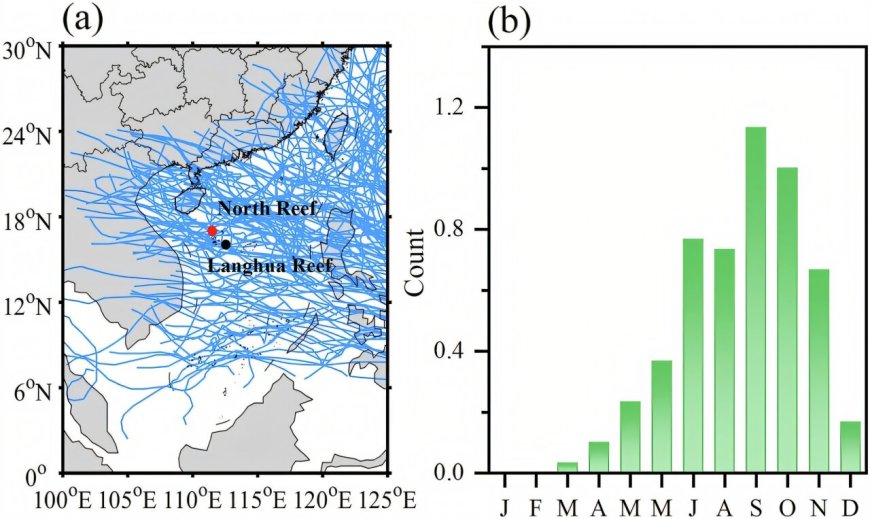Ancient Shell Data Reveals Changes in Tropical Cyclone Patterns Over 3,000 Years
A recent study using a 3,000-year-old fossil Tridacna shell from the South China Sea has uncovered shifts in tropical cyclone activity. The research suggests that 3,000 years ago, tropical cyclones were more frequent and peaked in summer, unlike the current trend of autumn-dominant storms. These findings provide valuable insights into the historical behavior of tropical cyclones and their relationship to climate change.

Tropical cyclones (TCs) are highly destructive weather phenomena that bring intense winds, heavy rainfall, and massive storm surges. Understanding the link between TCs and climate change has been challenging due to limited observational data spanning less than 100 years. To address this, a research team led by Prof. Yan Hong from the Chinese Academy of Sciences studied prehistoric TC activity using a 3,000-year-old fossil Tridacna shell from the northern South China Sea.
The analysis revealed that TCs 3,000 years ago were 15% more frequent and peaked in summer, unlike today's autumn-dominant storms. This shift is believed to be linked to a northward migration of the Intertropical Convergence Zone, creating conditions favorable for TC formation. The study provides new insights into the seasonal changes in TC activity.
For more information, refer to the study published in npj Climate and Atmospheric Science (2025) at Phys.org.
What's Your Reaction?
 Like
0
Like
0
 Dislike
0
Dislike
0
 Love
0
Love
0
 Funny
0
Funny
0
 Angry
0
Angry
0
 Sad
0
Sad
0
 Wow
0
Wow
0














































































































































































